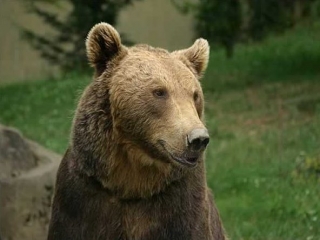Posted 01/28/10
Re-wilding, the return of previously extirpated megafuana, is fast becoming a reality in Eastern Europe following the collapse of the former U.S.S.R. But the complex socio-economic drivers playing out at the scale of entire countries presents unique challenges when modeling brown bear response to land-use and land cover change.
With an increasing human population and expanding impact on the environment, extinctions are happening at an unprecedented pace. You may wonder what would happen if people suddenly left the land and let it return to a natural state. Well, just such a scenario is playing out in Eastern Europe following the collapse of the former U.S.S.R..This isn’t Utopia, far from it in fact, as entire countries are grappling with socio-economic and political issues, including land abandonment, declining agricultural production, changing public-private land tenures, and succession of agricultural lands to shrublands and forests. At the same time, re-wilding, or the return of previously extirpated megafuana is fast becoming a reality. How do the socio-economic drivers of land use and land cover change (LULCC) affect biodiversity? Enter Pedro Camilo Alcantara Concepcion to answer that very question.A method, a map, and a megafaunal mammal

The goal of Camilo’s dissertation research is to describe and understand the consequences of land use change in Eastern Europe for brown bear, a proxy for biodiversity due to its expansive habitat requirements. Before he can do that he must first identify abandoned land, a novel LULCC classification here-to-fore absent from standard LULCC products. He is using a time series of a single MODIS tile and a combination of Support Vector Machines, reflectance data and phenology, and TIMESAT to determine the extent of land abandonment within the tile.Following this proof-of-concept is the application of the methodology to the 8 MODIS tiles comprising Eastern Europe and development of a map of land abandonment for the region. Camilo expects the map will reveal patterns of land abandonment evident within countries and among countries as well. A subsequent analysis of this map will explore the socio-economic drivers of those patterns, including transition of land from government to private ownership and legacy effects of land use under different political regimes.The final step in this process is to determine how the land abandonment patterns affect brown bears in Eastern Europe. Camilo will use the land abandonment map and habitat fragementation algorithms to understand how deforestation and aforestation contribute to the expansion of brown bears.”
Story by Chadwick Rittenhouse
